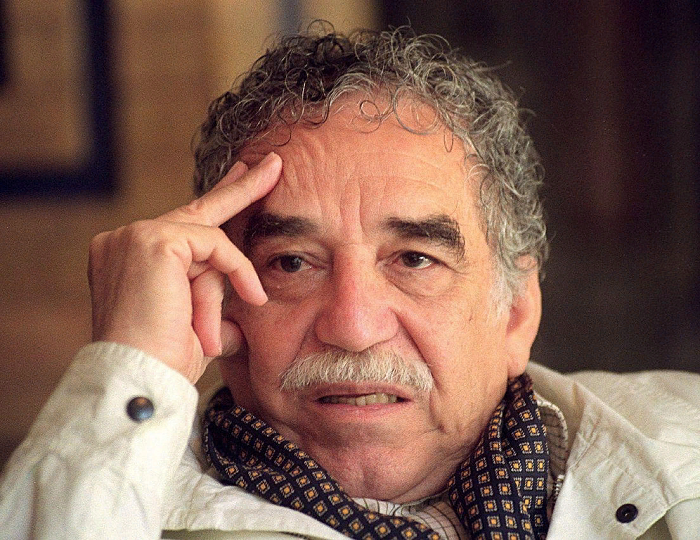Gabriel Garcia Marquez is a Colombian writer, a representative of the direction of “magical realism” in literature.
His works do not lose their relevance today, and some details of his personal life become a real revelation even for the most sincere fans of his work.
In 1955, Garcia Marquez’s first novel “Fallen Leaves” about an old colonel was published – it took the writer 7 years to find a publisher. One day, a Colombian noted that of all the works written since 1973, “Fallen Leaves” was his favorite work, because it was “the most spontaneous and sincere.”
Six years later, the writer’s second novel “No one writes to the Colonel” was published about a 75-year-old retired colonel, a veteran of the Thousand-Day War. The realistic text of the story was marked by the influence of Ernest Hemingway.
In these two stories, as well as some of Garcia Marquez’s later works, references can be found to “La Violencia”, the brutal civil war between the Liberal and Conservative Parties of Colombia in the 1950s. The characters of the stories are experiencing various unfair situations, such as curfews, underground newspapers and censorship in the press. There are similar references in the first novel “The Evil Hour” (1962), but the writer decided not to use his work as a platform for political propaganda.
If the first works of Garcia Marquez were written in the genre of “realism”, then later the writer experimented with less traditional directions. So, the style of the novel “One Hundred Years of Solitude” (1967), which brought Gabriel world fame, was dubbed “magical realism”, and the most striking example of the phenomenon was a fragment about how a beautiful woman hanging laundry on a rope suddenly picks up and is carried away by the wind.
In 1972, Garcia Marquez introduced his early works to the public by publishing the collection “The Eyes of a Blue Dog” – it includes early stories created between 1947 and 1955 and first printed on the pages of local newspapers. In short stories, Garcia Marquez, who had not yet fully decided on the style, boldly allowed himself to experiment, but always remained a virtuoso of his craft.
In the late 60s, Garcia Marquez, inspired by the flight of Venezuelan dictator Marcos Perez Jimenez, began writing the dictatorial novel “Autumn of the Patriarch”. Work on the book lasted for more than 7 years, until 1975, when the novel was finally published. According to Garcia Marquez, this novel is “a poem about the loneliness of power.” The plot of the book develops through a series of anecdotes about the activities and life of a politician, which do not appear in chronological order.
In 1981, the novel “Chronicle of Near-Death Death”, an innovative novel in form, was published. The work, written in a pseudo-journalistic style, a few years later formed the basis of a film directed by Francesco Rosi.
On December 8, 1982, Garcia Marquez was awarded the Nobel Prize in Literature “for works in which the fantastic and realistic are combined in a rich imaginary world reflecting conflicts and life on the continent.” The writer’s speech was titled “The Loneliness of Latin America”. Garcia Marquez became the first Colombian and the fourth Latin American to be awarded the Nobel Prize in Literature.
In 1985, Garcia Marquez released another book that became a bestseller – “Love during the plague.” The novel explores love in countless forms, “ideal” and “depraved”. The book is based on the tragicomic story of the relationship between the writer’s parents, Louise and Gabriel. The girl’s father, the same grandfather-ladle, did not approve of Louise’s choice – her beau was reputed to be a famous womanizer. Gabriel Sr. had to write hundreds of love poems and letters before Louise’s parents allowed the young to get married.
Four years later, the biography of Garcia Marquez was replenished with the novel “The General in his labyrinth”. The genre of the work is difficult to classify – critics’ opinions on this matter differ. The term “new historical novel” was even proposed – a genre combining Latin American boom, post-boom and postmodernism.
In addition to literature, Garcia Marquez has been involved in the world of cinema. He has written scripts for more than 25 films and TV series, and 17 films have been made based on his works.
In 2000, the poem La Marioneta by Mexican ventriloquist Johnny Welsh was published in the newspaper “La Republica” in Peru. For some reason, the authorship of the verse was attributed to Garcia Marquez. Rumors began to spread quickly that the heartwarming lines were a farewell letter from a seriously ill writer. For two days, the poem was actively recited on radio stations, the text quickly spread over the Internet, but it soon became clear that Garcia Marquez had nothing to do with the publication.
The last work in the Colombian’s career was the novel “Remembering my sad Whores”, published in 2004 in Spanish. The book became the first artistic composition of the writer after a long break. In 2011, the book was adapted by Danish director Henning Carlsen.














